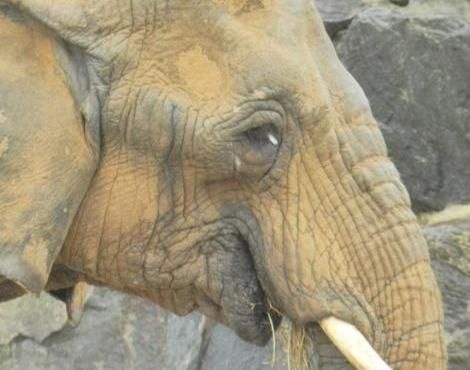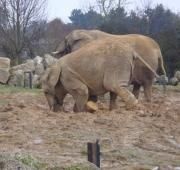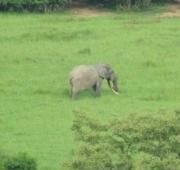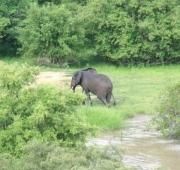
The African Bush Elephant is the largest of all living creatures on land today, with some individuals growing to weigh more than 6 tons. The Elephant is thought to have been named after the Greek word for ivory, meaning that Elephants were named for their uniquely long tusks. Although many of the ancestors of the African Bush Elephant became extinct during the last ice-age (including the Woolly Mammoth), there are three distinct species of Elephant remaining today which are the Asian Elephant (of which there are a number of sub-species), the African Bush Elephant and the African Forest Elephant. Although these two Elephant species are very similar, the African Bush Elephant is considered to be generally larger than the African Forest Elephant, which has rounder ears and straighter tusks.



African Bush Elephant Anatomy and Appearance
The African Bush Elephant is the largest known land mammal on Earth, with male African Bush Elephants reaching up to 3.5 metre in height and the females being slightly smaller at around 3 metre tall.The body of the African Bush Elephants can also grow to between 6 and 7 meters long. The tusks of an African Bush Elephant can be nearly 2.5 meters in length and generally weigh between 50 and 100 pounds, which is about the same as a small adult Human. African Bush Elephants have four molar teeth each weighing about 5.0 kg and measuring about 12 inches long. As the front pair of molars in the mouth of the African Bush Elephant wear down and drop out in pieces, the back pair shift forward and two new molars emerge in the back of the African Bush Elephant's mouth. African Bush Elephants replace their teeth six times during their lives but when the African Bush Elephant is between 40 to 60 years old, it no longer has teeth and will likely die of starvation, which is sadly a common cause of death of Elephants in the African wilderness.



